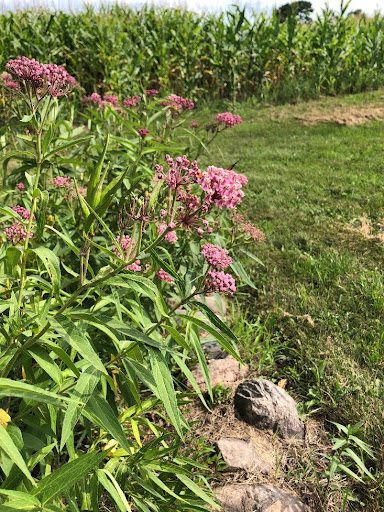Where are the monarchs now?
Starting now, around the middle of August, butterflies from the northern part of the North American breeding range begin to migrate south. Seasonal conditions can advance or delay the timing of migration and resources available, so keep an eye out on the Journey North map to see when reports of fall migratory roosts are picking up in your area, or head out and check your trees for butterflies spending the night!
Seed mixtures should be designed to provide high value to pollinators but also be cost-effective and meet the land manager’s objectives. However, those who choose to install pollinator habitat may have questions about what type of seed mix to plant. Farmers for Monarchs spoke with Elsa Gallagher, the Habitat Program Director for the Bee and Butterfly Habitat Fund, to discuss seed mixes and how farmers can design the ideal mix for their projects.
Choosing a Seed Mix
There are several characteristics that make a seed mix beneficial for pollinators. Principally, the mix is developed with the local region and soil type in mind and is cost effective. There also needs to be a diversity of species in the mix including species that bloom from early to late in the growing season.
“That's really important in the life cycle of our pollinators and those are the times of the year where we don't have quite as many species available,” said Gallagher. “We try to have a high-quality seed mix that includes 40 species or more.”
When choosing a seed mix specifically for monarch butterflies, producers will want to ensure the mix includes species of milkweed. Because it is so widespread across the landscape, common milkweed (Asclepias syriaca) supports many monarch offspring, but there are a variety of species of milkweed that are well suited for different types of projects. Wildflower blooms of all kinds are important to nourish adult monarchs during breeding and migration, so it is critical that seed mixes include a wide variety of plants providing nectar throughout the growing season.
“Monarchs that are flying back down to Mexico are able to have those [late season] nectar resources, because of these seed mixes,” said Gallagher.
Location and Resources

Planting pollinator habitat does not require large swaths of land to provide benefits to pollinators. Even small areas of land are important.
“We always say that there's room on any farm for conservation and for habitat projects,” exclaims Gallagher.
Simple locations like a filter or buffer strip can be enhanced with pollinator habitat. Land managers often utilize road ditches as a location to install habitat. And gardens or small habitat plots on the farmstead can be great for pollinators and people!
“It's just critical that you do some good site prep when you decide where you're going to put it,” said Gallagher.
Farmers for Monarchs has previously highlighted the Pollinator Habitat Establishment & Management Guide as a valuable resource for farmers interested in installing pollinator habitat on their land. The guide offers a wealth of information about seed mix design, from providing a seed calculator to discussing native versus naturalized species. It also answers frequently asked questions about installing pollinator habitat.
“It's free and gives you a good in-depth idea of how to create pollinator habitat on your property,” said Gallagher. “It goes through some resources that are available through us through our Seed A Legacy program where you can get the free seed and consultation with biologists over the phone or via chat.”
We also encourage you to reach out to the Pollinator Habitat Help Desk to get started on your next pollinator project. The number for the helpdesk is (337) HABITAT or (337) 422-4828. Farmers for Monarchs also lists several State Planting Resources that provide information about commercial seed providers.
A well-designed seed mix ensures your project’s success and provides invaluable benefits for both pollinators and landowners. From critical forage for pollinators like the monarch butterfly to carbon storage, erosion control, and water filtration and storage, these habitats provide essential ecosystem services and also provide a beautiful aesthetic for your land.
